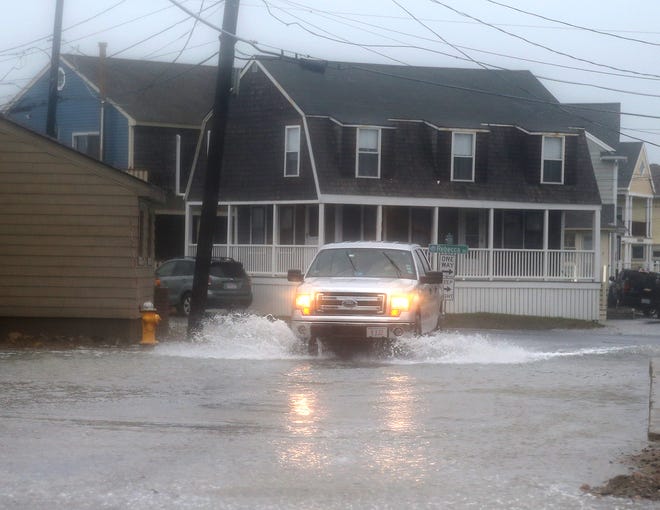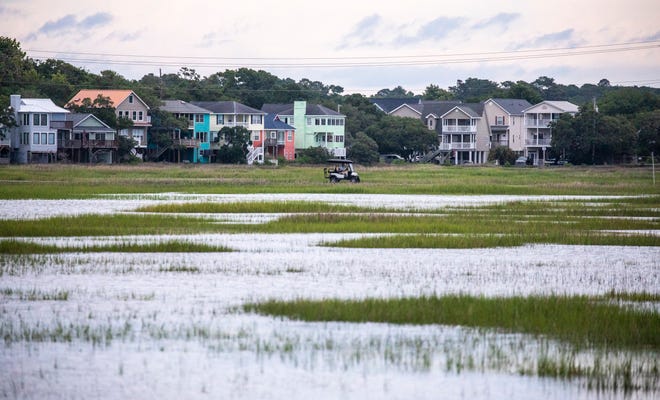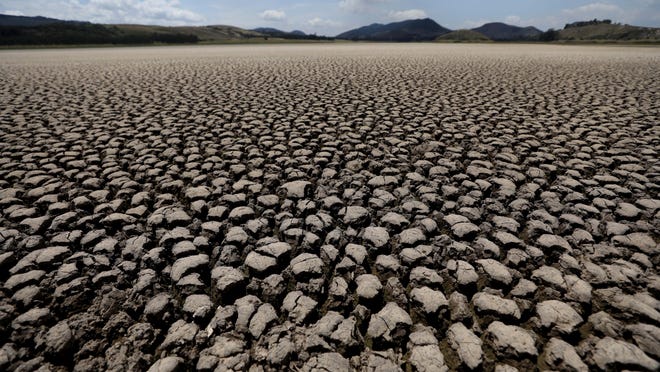Higher high tides bubbling up from storm drains and spilling into streets require improved flood defenses against rising sea levels, federal officials warned Tuesday.
“Water levels are nearing the brim in many communities,” said William Sweet, an oceanographer with the National Oceanic and Atmospheric Administration. About 2/3 of the federal tide stations along the East and Gulf coasts saw increased flooding over the past year.
“We’re having sunny day flooding, (with) no storm at all and you’re starting to overwhelm the defenses,” Sweet said.
Every inch matters, too. A one-inch rise rise in sea level makes “a very noticeable change” when an above normal high tide pushes into low-lying areas, he said.
Compared to 2000, the East and Gulf coasts “already experience twice as many days of high tide flooding compared to the year 2000, flooding shorelines, streets, and foundations and damaging critical infrastructure,” said Nicole LeBoeuf, director of NOAA’s National Ocean Service.
CLIMATE POINT:Subscribe to USA TODAY’s free weekly newsletter on climate change, the environment and the weather

What’s the forecast for the future?
Nearly a foot of sea level rise is expected over the next 30 years.
High tide flooding is forecast to surge by 2050, occurring on average between 45-70 days a year, up from an average of four over the past year, according to the updated projections released Tuesday.
In Galveston, Texas, high tide flooding could occur up to 198 days more often in 2050 than it did in 2020, depending on the amount of climate warming and sea level rise.
In Annapolis, Maryland, where high tide flooding already plagues its historic downtown, high tide flood days could increase 75 to 115 days a year.
That’s just the days when high tides meet NOAA’s threshold of 1.75 to 2 feet above normal, and doesn’t include days when tides are higher than normal but below the threshold.

Which communities saw the greatest number of flood days last year?
High tide flooding occurred 10 days or more in locations along the Atlantic Coast between New York and South Carolina, and in Mississippi and Texas.
Sea level rise isn’t just a beachfront issue
The only community in the contiguous US that broke its record for high tide flood days in the past year was Reedy Point, Delaware, more than 60 miles inland along Delaware Bay.
Two other beachfront communities broke or set a record. Kwajalein Island in the Marshall Islands in the South Pacific experienced four days of high tide flooding, up one from the previous year. The Springmaid Pier station near Myrtle Beach, South Carolina, tied its previous record, set in 2021, with 11 high tide flood days.
‘WE NEED TO SIT UP AND TAKE NOTICE’:Roseate spoonbills feeling the effects of rising seas and warming climate
Fewer communities set high tide flood days records last year. why?
The nation benefited from the La Nina, a pattern of cooler than normal water along the equator in the Pacific, which tends to suppress tide heights, Sweet said. “That helped take the foot off the accelerator.”
The reprieve is only temporary and doesn’t diminish the need to prepare for greater flooding, he said. La Nina is forecast to dissipate by sometime next year.
Because of those lingering impacts, high tide flood days for the next year are forecast to be about the same as the past year, about 3 to 7 days. Sweet said that’s still an average increase of about one day over tide levels in 2019-2020.
Where does flood information come from, and why is it important?
The annual flood days report uses measurements recorded at 97 tide stations along the US coastline between May 2021 and April 2022. Some of the gauges have recorded data for more than 100 years.
The forecasts can help communities handle disruptive flooding and “protect life, property, the economy and the environment for future generations,” Sweet said. “For example, for the first time in history, the infrastructure we build must be designed and constructed with future conditions in mind.”
Dinah Voyles Pulver covers climate and environment issues for USA TODAY. She can be reached at [email protected] or at @dinahvp on Twitter.

